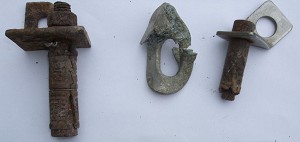

When you clip a bolt, does it ever cross your mind how it got there? You may think, "how long has it been there", or, "what a silly place for this bolt, it should be a bit higher", but do you actually consider the effort that has gone into putting that bolt in place?
Back in 1992 I put up a couple of new routes in Water-cum-Jolly. They were poor routes, even if I do say so myself, but they got a bit of attention and did have about 10 bolts. I remember what a huge effort it was to place the things - slightly harder on first ascents where you have no old gear to hold you to the line - but it was still sufficient to stop my new routing in its tracks.
In the 80s and 90s a lot of bolts were placed by inexperienced climbers in places like Yorkshire, the Peak and North Wales on the Ormes. In Portland Pete Oxley was a little more forward thinking since he developed a system of low-cost and long-life bolts that could survive the harsh seaside atmosphere. Two decades later many of these bolts across the country, including Portland, are in need of replacing. (NOTE: the bolt in the photo to the right is actually a rare case due to very soft rock and situations like this can be easily replaced).
This is a huge job which, unlike first ascents, doesn't have any kudos associated, it is just hard work and often not even noticed. Thankfully there are groups of climbers in many of the areas of the country who have got together to form bolt funds dedicated to raising money and awareness of this issue. Unfortunately though they are still relatively unknown to many UK climbers and the plea for funds and assistance often fails to reach the target audience - namely those out on the crags climbing and enjoying the bolted routes.
In my experience most climbers are very appreciative if this effort is pointed out to them and I don't think most would resent paying a small amount towards bolting each time they go to a sport climbing area. The only problem is that exploiting this potential generosity is not easy.
I sent a set of questions to the people behind the main UK bolt funds. The following is a potted history of Bolt Funds in the UK starting with a table of some of the facts and figures, and finishing with news of how you can help.
| Bolt Fund | Set up in | How much so far? | New routes |
| Cumbria Bolt Fund | May 2008 | £5,000 | Mostly re-equipping |
| Yorkshire Bolt Fund | 1995 | £18,000 | Yes, new routes |
| Peak Bolt Fund | early 2008 | £1,200 | Re-equipping only |
| North Wales Bolt Fund | 2008 | £4,000 | Mostly re-equipping |
| South Wales Bolt Fund | late 2007 | £1,000 | Re-equipping only |
| Dorset Bolt Fund | 1994/2006 | £2,000 since 2006 | Mostly re-equipping |
Early Fund Raising Efforts
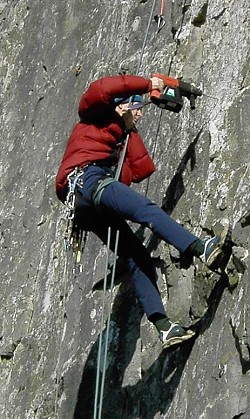
Possibly the first dedicated Bolt Fund was the Dorset Bolt Fund which was set up and run by Pete Oxley in around 1990. Pete can't remember exactly how much he raised up to when he emigrated and passed the fund over in 2006. He says he set up the fund for the purposes of mass retrobolting of all his own climbs and a few other activists routes on Portland and at the Swanage quarries. He developed his own staple glue-in bolt system to keep the cost down, and used the fund to supplement his own significant personal investment, to buy materials and the odd drill bit. Pete describes the huge effort of all his bolting work as, "the biggest thing I have ever done in my life and probably will remain so". Although it was mostly a one-man operation others were involved increasingly over the years. He even used to wander the crags with a collecting tin but got a mixed response from grateful contributions to those who packed up and left when they saw him coming.
Pete also commented about an interesting initiative that he established where he offered a bolting service to other climbers; they spotted a line and paid Pete full price to equip the route. Pregnant Pause on Portland is an example of such a route.
By far the most successful Bolt Fund is the Yorkshire BF which was established in 1995 and has so far raised over £18,000. Dave Musgrove described the early years of the fund:
"there was an initial rush of enthusiasm in the first couple years raising around about £1,000 which bought us a second hand drill and enough bolts and resin to get started on some of the more needy cases at Malham in particular but then interest began to wane and from 1999 to 2001 we only raised £37."
One person who has been synonymous with bolting in the UK starting with the controversial ascent of Clarion Call in Chee Dale in 1983 - the Country's first new line to be bolted and climbed as a sport route. Gary Gibson has gone on from here to bolt many new routes across the country in particular in the Peak, South Wales and on Clwyd limestone. Gary has never set up an organised fund and generally just gets on with it, switching his attention between bolting new routes and bolting old routes.

The New Millennium
Since 2000 more bolt funds have been set up and the activity in the existing ones has increased.
A boozy evening arranged by the Yorkshire Bolt Fund in 2001 led to a resurgence and raised enough funds to re-bolt Trow Gill. The activity at this stage was still for re-equipping only but some climbers began to donate money for specific new routes at a more amenable grade at Giggleswick, in a similar development to Pete Oxley's bolting-on-request initiative.
After this second burst of activity the Yorkshire Bolt Fund hasn't had to do much active fund raising, just reminding people how much it all costs by way of the free topo downloads from the Leeds Wall web site. Since most of the old routes have now been re-bolted they have spent most of the recent money on new routing in the various quarries in particular Foredale Quarry which now has over a 100 routes.
There are several smaller bolt funds that have been set up more recently. The North Wales Bolt Fund grew out of the North Wales Slate Fund and set up its own bank account in 2008. It has raised over £4000 so far from various fund raising initiatives, plus the shop V12 and the PayPal buttons on the Slate and NW Limestone Wiki pages. There is also the Cumbria Bolt Fund which has carried out work on the limestone crags of the South Lakes, and the sandstone of St. Bees.
Down in South Wales the fund there has been running for three years which focusses on re-bolting routes below 7a. Contrary to this is the Peak Bolt Fund where the focus is on the upper grade routes, although Jon Fullwood, who jointly runs the fund, states that this is because gary Gibson does such a good job on the other stuff. He also describes how much effort is involved in rebolting some of the steep hard routes:
"One example which illustrates the effort sometimes required on these routes has been Monumental Armblaster (8b+). This took three of us about five sessions in total to clean, remove all the old bolts and then re-equip with 12mm glue-ins. In that amount of time we could have re-equipped ten or fifteen clean vertical lines but this is an iconic line of national importance. The route is amazing and was worth all the uncomfortable filthy hours of scrubbing. In the end it saw at least ten ascents in 2010, which is pretty good going seeing as it probably saw none in the fifteen years prior."
How can I make a donation?
Simple, go to www.ukboltfund.org and follow the click links to donate directly to your chosen fund. Most have PayPal links so you can donate directly with your credit/debit card without moving from you current position.
And don't forget to keep donating! Every time you go sport climbing in one of these areas try and get into the habit of making a small donation to the appropriate fund. You spend £5 on your beer so how about a fiver for the bolting as well?
www.ukboltfund.org is a web site set up by UKClimbing (and Rockfax guidebooks) to create a single portal site for all the UK bolt funds. No money is taken by UKClimbing Limited, the web site just redirects to the PayPal and payment pages of the Bolt Fund web sites.
What else can you do to help?
I asked all the people behind the bolt funds what they need more - more money, or more volunteers. All replied with the answer more volunteers to do the work. This isn't to say that they are all swimming in cash, but it does mean that there are things other than give cash that people can do to help.
The BMC run bolting workshops several times a year at different venues around the country. Keep an eye on the BMC site, or UKC, to find out when these are being held. All the funds also have individuals who will be happy to introduce potential new volunteers to the procedures required to place bolts. Even if you don't want to wield a drill then there are plenty of other jobs that can be done.
The BMC also have funds available for bolting via their yearly Better Bolts Campaign.
Thanks to the following for their help in compiling this article and support for the UKBoltFund.org initiative: Pete Oxley, Dave Musgrove, Mick Ward, Jon Fullwood, Dan Robinson, Ron Kenyon, Chris Parkin, Dan Middleton, Dave Turnbull, Myles Jordan, Rob Kennard, Steve Taylor and Gary Gibson.
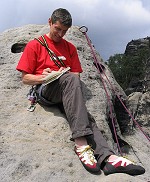
About Alan James
Alan is the Director of UKClimbing and Rockfax. He has only placed a few bolts but has clipped thousands of them, and published many books documenting even more. The idea to try and bring the UK Bolt Funds together onto a central location sprang out of a thread on UKC started by Mick Ward. It was also prompted by the frequent discussion on the forums about bolting and who should fund it.
- DESTINATION GUIDE: The Best of Peak Limestone Sport Climbing (6a – 7a) 9 Jan
- REVIEW: Dolomite Crodarossa Hi GTX Boot 21 Jun, 2022
- REVIEW: Scarpa Gecko Approach Shoe 11 Jan, 2022
- REVIEW: Red Chili Mystix 16 Jul, 2021
- PHOTOGRAPHY: Three Generations on Wall End Slab 12 Jul, 2021
- REVIEW: Arc'teryx Creston Pant 25 Sep, 2020
- VIDEO: Removing Loose Rock at Horseshoe 20 Jul, 2020
- REVIEW: Montane Protium Pull-on 16 Jun, 2020
- REVIEW: Lowe Alpine Rogue 48 5 Jun, 2020
- FEATURE: The Story of a Cartoon and Satire in the '90s 1 Apr, 2020

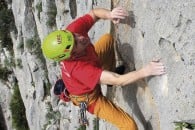

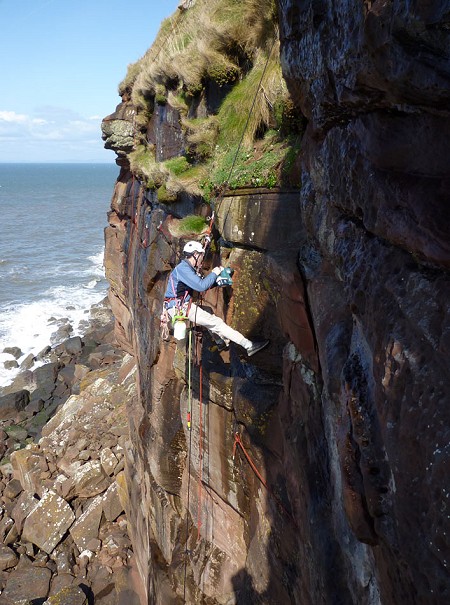

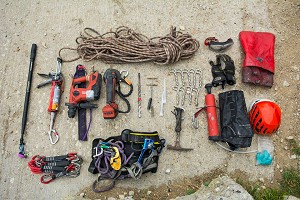
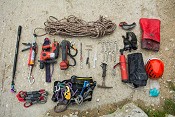
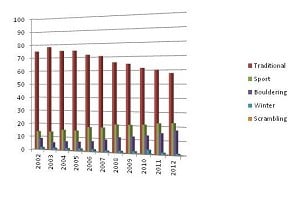
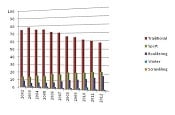








Comments